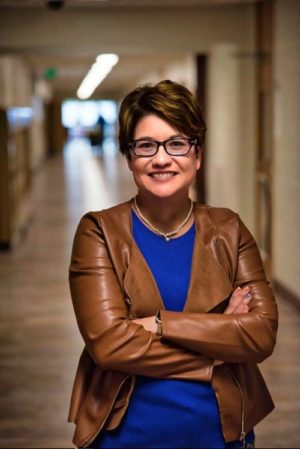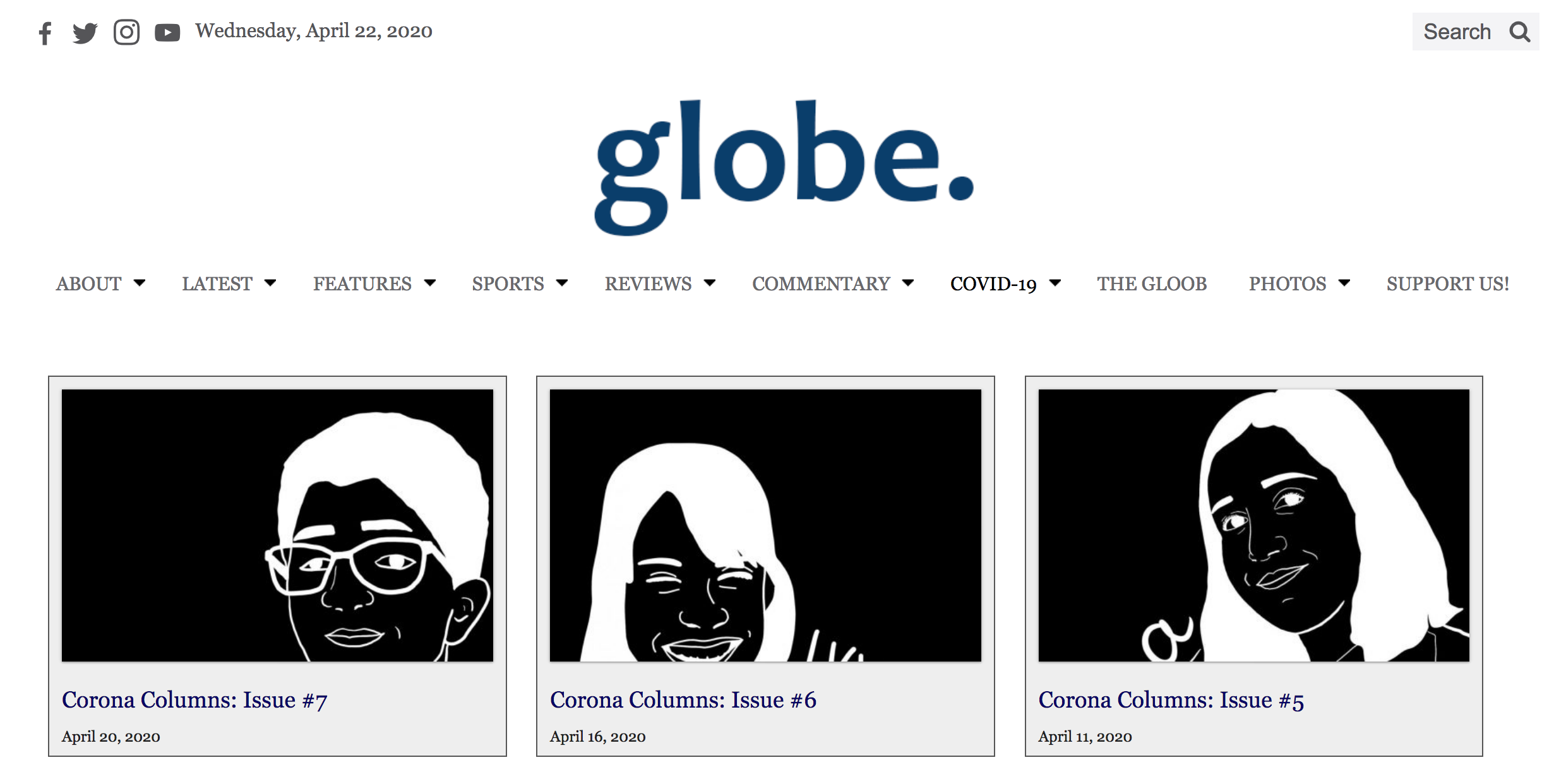The coronavirus as a teachable moment? Yes, indeed. Many NEA members are integrating the pandemic into their lesson plans—using students’ natural curiosity about what’s happening in the world around them to deepen their understanding of critical, timely concepts in science, history, journalism, and more.
Done thoughtfully, these kinds of pandemic-related lessons can assuage students’ anxiety about COVID-19, experts say. But educators also should be sensitive to the social-emotional needs of students, which take top priority at this time.
Real-Life Science Lessons
“It’s science,” says Linda Rost, a science teacher at Baker High School in southeast Montana and a 2020 National Teacher of the Year finalist, about the current pandemic. “We always do a lot of research—they read journal articles on other topics—but this is an opportunity to practice those skills on a topic that really matters to them.”
Rost, who teaches a science research class among others, has one student who is looking into coronavirus vaccines in cattle—a relevant topic in their rural, ranching community. “These are open-ended projects, really digging into what they want to study,” she says. “I have another student who is comparing COVID-19 to the flu, looking at trends and data over time.”
 Linda Rost
Linda Rost
For her young scientists, real information is reassuring. Looking for the truth, “I think it actually relieves their anxiety,” she says.
At Graves County High School in rural southwest Kentucky, teacher Stephanie Graves also is diving into coronavirus lessons. “You probably assume it’s a biology class. That’s where students learn about viruses, right?” writes Graves, in a National Science Teachers Association blog post that shares her lesson plan.
Well, Graves teaches physics, and she led her students in a rich discussion around reliable and less-reliable sources of information. “Once we began digging deep into available resources such as the Centers for Disease Control and the World Health Organization, they were hooked and engaged in the lessons,” writes Graves. In the end, “the kids ‘got’ how science, along with fact-checking, can drastically impact their daily lives. They also got a real-life lesson on the impact of sensationalism and unreliable sources.”
Meanwhile, middle-school science teacher Melissa Lau, a sixth-grade science teacher in the Oklahoma City suburbs, focused on another real-life lesson: the science of social distancing. Before their online Zoom class, students worked on a lesson guide that included a video from Lau (with photos of her cat, Jellybean!) and writing prompts. Students have tons of questions, she told The Wall Street Journal. “This moment is their 9/11. They need to talk about it.”
History in the Making
The pandemic isn’t just about science. These days are an extraordinary time in our lives. With that in mind, historians and archivists, including the Smithsonian’s Natural Museum of American History, have called on Americans to record this moment in history—through diary entries, audio-visual recordings, social-media posts, and otherwise. “What we as contributors record is what the future generations will remember,” Mark Tebeau, a project director of an Arizona State University virtual archive told The New York Times.
To that end, California social-studies teacher Bryan Shaw created a one-page Covid-19 “journal assignment” that asks students to make daily observations of their community. It asks questions like, “How is today different from yesterday for you?” “Do you see any examples of racism, privilege, and income inequality in any of the events that happened today?” and “Did you see anything that gave you hope? Anxiety? Fear?”
He encourages them to use video, written language, poetry, sketches or other means of expression to document their experiences, and tells them that they will turn in their journals when they return to school.
At Clayton High School, near St. Louis, the school’s award-winning student journalists also are documenting these days. Last month, they agreed to dedicate the May issue of their newsmagazine, the Globe, to the coronavirus, says faculty advisor Erin Sucher-O’Grady. “Before we left for spring break, we knew it was going to be our cover,” she says. After break, when students began meeting virtually and writing their story proposals, they realized every one of them felt compelled to write about the news that gripped their families and communities.
 Student journalists at Clayton High School near St. Louis have written and published an assortment of personal "Corona Columns."
Student journalists at Clayton High School near St. Louis have written and published an assortment of personal "Corona Columns."
Some of her student journalists already have posted online columns and articles, like the one who desperately misses face-to-face visits with his grandmother and suggests to readers that they call their loved ones and “tell them how much they mean to you.” Another Globe reporter waded into politics, comparing President Donald Trump’s COVID-related statements to local St. Louis County officials’ guidance on keeping safe. Yet others have tossed up more lighthearted coverage—like the best apps to connect socially distant friends.
It's not difficult for Sucher-O'Grady's journalists to publish online—they have been using digital publication tools for a few years—and the work gives them a great sense of purpose. “For all of us who are stuck at home, feeling a little bit helpless, the work has given myself and the students an outlet,” says Sucher-O’Grady. “It’s like, here’s something I can do with this energy and desire.”
Math, Media and More
Contemporary lessons about coronaviruses and COVID-19 can be integrated into almost every content area. In Connecticut, media specialist Kathleen Currie Smith and math teacher Sean Law recently partnered on a lesson for Ledyard High School’s students that looked at the presentation of statistics in news sources, and introduced resources, like the Johns Hopkins University dashboard, where they could fact-check claims.
"You could see some kids really thinking about the information and the knowledge they consumed," Law told Education Week.
Indiana middle-school math teacher Alison Strole also introduced pandemic data to her students. First they wrote an exponential equation to predict the spread of a fictional pandemic (using this Mathalicious lesson), then they compared their findings to a real coronavirus graph with data from the World Health Organization. Strole told Education Week that seeing the rapid growth of infection helped students to see the importance of early responses.
And that's not all. Teachers report using the pandemic to illustrate ethics problems, to reflect on historical events, like the internment of Japanese-Americans, and more. In California, high school social-studies teacher Jayson Chang used it to talk about racism against Asian-Americans. Information is the best weapon against misinformation, these educators say.






